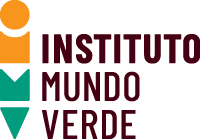Assessment Difficulties and Misinterpretation of Learning Gaps
Issue 1: Assessments fail to reflect students’ full bilingual capabilities.
Potential Reason: Assessments are only administered in one language.
Strategies:
- Incorporate side-by-side assessment tools – Use equivalent assessments in both languages when available (e.g., MAP Growth in English and MAP Español). This offers a fuller picture of student performance across both languages.
- Offer alternative assessments – Supplement standardized data with oral retells, student-created bilingual projects, or writing samples in the partner language. These allow students to demonstrate understanding regardless of dominant language.
- Use bilingual rubrics and translation-friendly tasks – Create rubrics that assess both language and content understanding separately. Design assessments where students can use their stronger language or translanguaging to explain their thinking.
Potential Reason: Data from both languages is viewed in isolation.
Strategies:
- Use visualizations to compare language growth – Display student data side-by-side (e.g., bar graphs or radar charts) to analyze biliteracy trajectories over time.
- Look for cross-linguistic strengths – Identify where skills transfer across languages (e.g., comprehension in Spanish used to support inference in English). Highlight this during team meetings and family conferences.
- Build student profiles using both language domains – Develop holistic data portfolios with writing samples, anecdotal notes, and performance assessments in both languages. Include student reflections where possible.
Potential Reason: Assessment design does not consider skill transfer across languages.
Strategies:
- Integrate translanguaging tasks – Ask students to read in one language and summarize or discuss in another. This reflects real-world bilingual practice and deepens cognitive engagement.
- Leverage cognate-based activities – Design vocabulary assessments that help students explore roots and meaning across languages. This builds metalinguistic awareness.
- Adopt a biliteracy continuum framework – Use a progression chart that recognizes growth in both languages simultaneously rather than assessing one in isolation. Tie it to dual language program goals.
Issue 2: Assessment data leads to deficit-based interpretations of student progress.
Potential Reason: Educators prioritize English growth data over bilingual development.
Strategies:
- Reframe the goal as biliteracy, not English-only success – Anchor assessment conversations in the goals of the dual language program, emphasizing that growth in either language contributes to academic and linguistic success.
- Celebrate growth in either language – Use visual trackers, bilingual certificates, or progress charts that equally value development in both languages. Recognize and announce achievements in Spanish and English alike.
- Use both data sets when conferencing with families – Present student growth through bilingual lenses using artifacts like side-by-side charts, bilingual writing samples, or audio reflections. Emphasize strengths and progress rather than gaps.
Potential Reason: Assessment systems do not capture progress made in the partner language.
Strategies:
- Create schoolwide systems for tracking partner language growth – Develop consistent tools such as oral language rubrics, running records, and vocabulary checklists to monitor student development in the partner language.
- Use portfolio-based assessment – Compile samples of student work in both languages, including voice recordings, bilingual projects, and reflections. Review these periodically to capture longitudinal growth.
- Include informal assessments from multiple sources – Gather data from teacher observations, student self-assessments, peer feedback, and home language interviews to construct a fuller picture of student learning.
Potential Reason: There’s a lack of professional development on interpreting multilingual data holistically.
Strategies:
- Share multilingual assessment videos or resources – Use resources like IMV’s video series to build staff capacity on how to interpret and respond to bilingual assessment data. Facilitate reflection and discussion.
- Introduce a biliteracy data protocol – Use structured protocols during data meetings that prompt teams to analyze growth across both languages, identify trends, and plan targeted instruction.
- Use collaborative planning – Pair language specialists with content teachers to co-analyze student data, co-design instruction, and determine language-specific supports.
Issue 3: Assessment tools are not accessible to multilingual learners.
Potential Reason: Assessments are linguistically complex and not scaffolded for language development levels.
Strategies:
- Simplify language without lowering rigor – Modify assessment prompts to use clear, direct language while maintaining cognitive challenge. For example, replace idioms or complex syntax with accessible phrasing, but keep academic vocabulary.
- Embed visuals and graphic organizers into assessments – Support comprehension by including images, charts, and labeled diagrams. Offer graphic organizers for writing tasks to structure thinking.
- Use small group testing and oral administration – Provide assessments in supportive settings with verbal read-alouds or peer-mediated assistance. This allows students to demonstrate content knowledge without being hindered by decoding challenges.
Potential Reason: Assessments do not allow for translanguaging or alternate ways to demonstrate understanding.
Strategies:
- Allow bilingual demonstrations of understanding – Encourage students to use both languages to explain thinking during performance tasks, especially in oral or project-based assessments.
- Accept bilingual written responses – Evaluate comprehension through bilingual journaling, labeled diagrams, or writing that uses a mix of both program languages. Prioritize clarity of ideas over strict language separation.
- Use dynamic assessment tasks – Design tasks where students receive support or prompts and are evaluated on how they learn, not just what they already know. This models real-life learning processes and scaffolds success.
Potential Reason: Students are unfamiliar with test formats or lack test-taking strategies in the target language.
Strategies:
- Provide practice with test formats using multilingual examples – Use released or teacher-made items in both languages to familiarize students with question styles and expectations.
- Teach metacognitive test-taking strategies – Explicitly model how to preview questions, underline key terms, and eliminate distractors. Provide bilingual strategy guides or anchor charts.
- Incorporate assessment modeling into daily instruction – Embed informal assessments like exit tickets, rubrics, and self-assessments throughout instruction in both languages to build familiarity and reduce anxiety.
Issue 4: Educators and families struggle to interpret what assessment data actually means for multilingual learners.
